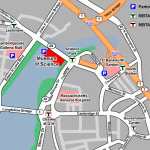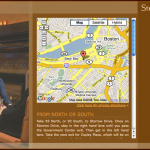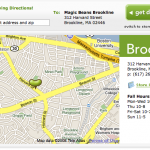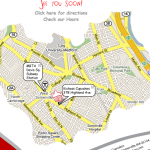On Tuesday, February 23rd, gunman Bruco Eastwood shot and wounded two students at Deer Creek Middle School in Littleton, Colorado. Math teacher Dr. David Benke was outside patrolling the parking lot after school at the time. When he heard the first shot, he charged at the gunman and wrestled him to the ground. Teachers Norm Hanne and Becky Brown were close behind. Bus driver Jim O’Brien shouted at the students already on his bus to get down and make the bus look empty before he rushed out to help hold down the attacker. Nobody was killed in the attack.
On Christmas Day last year, Umar Farouk Abdulmutallab brought explosives onto Northwest Airlines flight 253 in his underwear. Passenger Jasper Schuringa put out the fire, burning his hands in the process, and then dragged the would-be bomber to the front of the plane to be restrained. Nobody was killed.
Back in December of 2001, Richard Ried tried to light a fuse leading into the explosives his shoe on American Airlines 63. Flight attendant Hermis Moutardier caught him in the act, and with the help of flight attendant Cristina Jones and other passengers subdued the 6’4″, 200 pound man, and restrained him with a seat-belt extension, belts, and headphone cords. Jones remarked to Time magazine afterward:
Most of it was instinct, and the knowledge of the Sept. 11 attacks. I don’t believe I would have grabbed [Reid] the way I did had I not known about Sept. 11. I don’t know that the passengers would have come to my aid so quickly had they not known about Sept. 11.
Nobody was killed.
The attacks of September 11th, 2001, at the cost of of 2,976 lives, may have taught us the most valuable lesson we’ve ever learned: that apathy, complacency, and (above all) inaction can have greater costs than we might ever imagined. We began that day with fantasies of terrorism where John McClane can rush to the rescue of anyone who sits quietly and stays out of the way. We ended it understanding that even when resistance is as deadly as it was for the passengers of United flight 93, the consequences of inaction — of not being John McClane, if only for a moment — can be even greater.
While the Transportation Security Administration learned from Richard Ried that travelers need to remove their shoes before boarding an airplane, the public already knew not to tolerate lit matches on board a flight. Even while we depend on police protection for our everyday safety, the police cannot be everywhere at every moment. But Dr. David Benke and his peers can be — collectively — and can be able to act immediately in society’s defense.
One of the most moving and memorable speeches in Aaron Sorkin’s The West Wing (from 20 Hours in America) comes after a bombing at the fictional Kennison State University. President Bartlett gives this address:
Forty-four people were killed a couple hours ago at Kennison State University. Three swimmers from the men’s team were killed and two others are in critical condition when after having heard the explosion from their practice facility they ran into the fire to help get people out.
Ran into the fire.
The streets of heaven are too crowded with angels tonight. They’re our students and our teachers and our parents and our friends. The streets of heaven are too crowded with angels.
But every time we think we’ve measured our capacity to meet a challenge, we look up and we’re reminded that that capacity may well be limitless. This is a time for American heroes. We will do what is hard. We will achieve what is great. This is a time for American heroes and we reach for the stars.
This is a time for American heroes, and we have them in abundance.




